20-Year-Old Champion Wheelchair Racer Has the Power, Speed, and Grit to Win It All
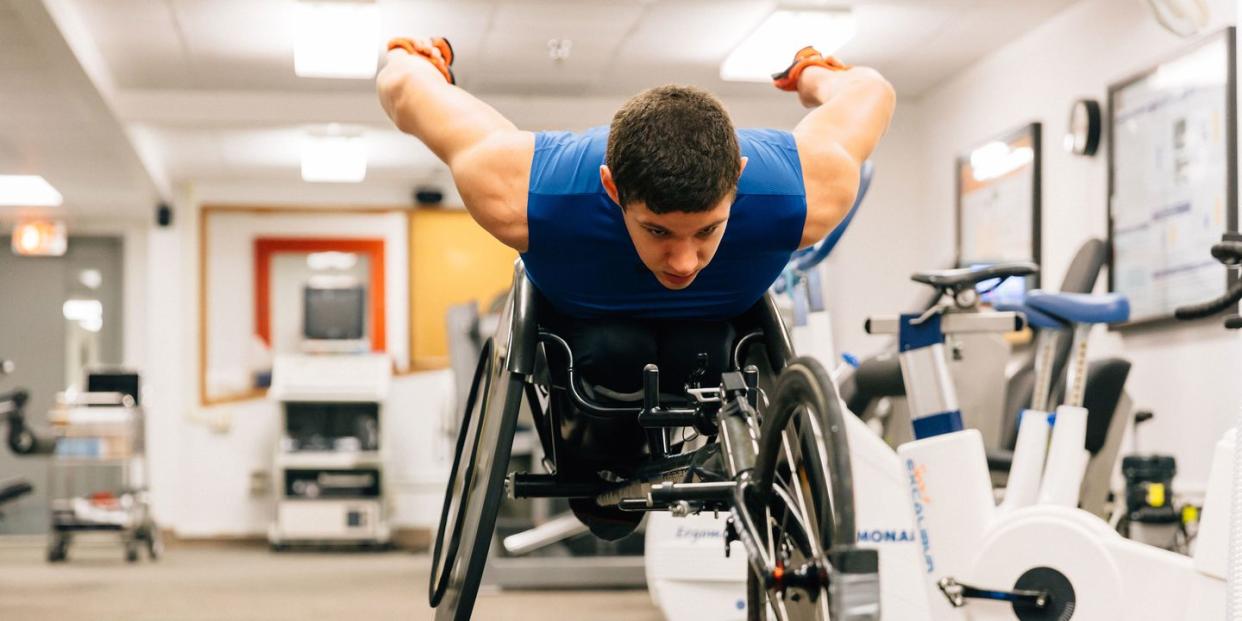
Midway through a 10K time trial in a University of Illinois exercise physiology lab-his racing chair secured into on a black metal trainer, called a roller-Daniel Romanchuk started to fatigue.
His mom Kim Romanchuk, standing nearby, could spot the signs. His head bobbed ever so slightly. His long, powerful arms-his wingspan measures 6’10”-didn’t rise quite as high behind him. Every so often, the rhythmic slapping of hard plastic gloves against the hand rings on his wheels missed a beat.
As he neared the imaginary finish line, his coach Adam Bleakney encouraged him: “Anything else you have in the tank, just dig in and grab it,” he said.
Romanchuk has always followed instructions. So, he dug in. Even after hesitating for a moment at the 6-mile mark, he sped back up, completing the trial in a swift 16 minutes and 22 seconds.
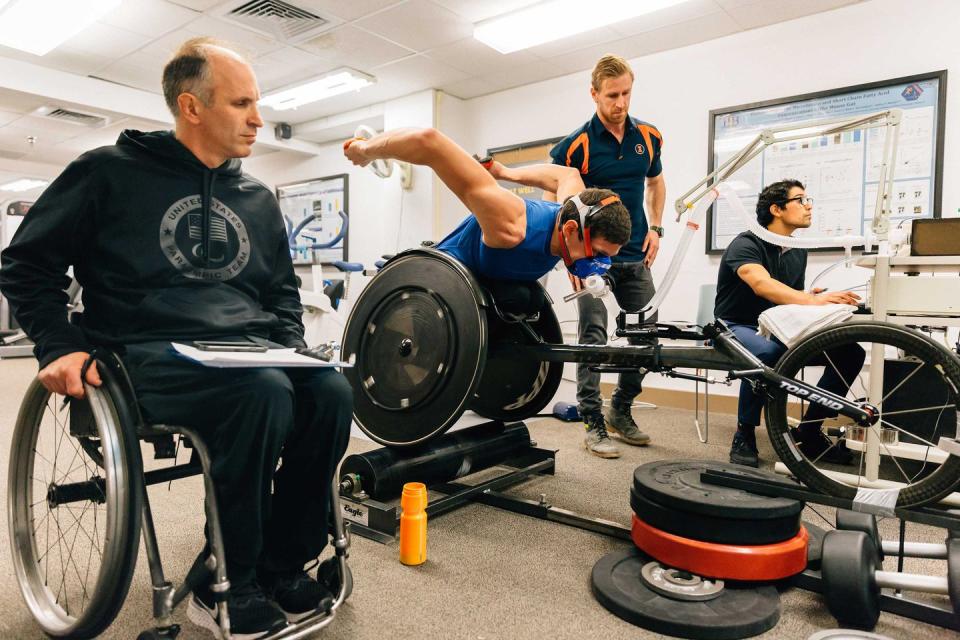
Later that day, Romanchuk described the trial to a teammate as “the worst 15 minutes of my life.” But Bleakney and the scientists running the test saw something else: more evidence of Romanchuk’s extraordinary power, speed, and grit.
A few months earlier, that powerful kick propelled Romanchuk to the first-ever American male wheelchair victory in November’s New York Marathon. He finished in 1:36:21, just a second ahead of Switzerland’s Marcel Hug, the defending champion and an eight-time Paralympic medalist.
The month before that, Romanchuk won the Chicago Marathon in 1:31:34, also in a sprint finish with Hug. Earlier in the spring, he’d placed third in both the Boston and London marathons. In the summer, on the track, he set world records in the 800 meters (1:29.66) and 5000 meters (9:44.84).
And he’s already looking ahead: Today, the New York Road Runners announced Romanchuk will be back to compete in the NYC Half on March 17. That’s one race he hasn’t won-yet-though he’s twice reached the podium. Before then, he’ll compete as a front-runner in the March 3 Tokyo marathon (he’ll also pick up his Six Star medal for completing all the majors).
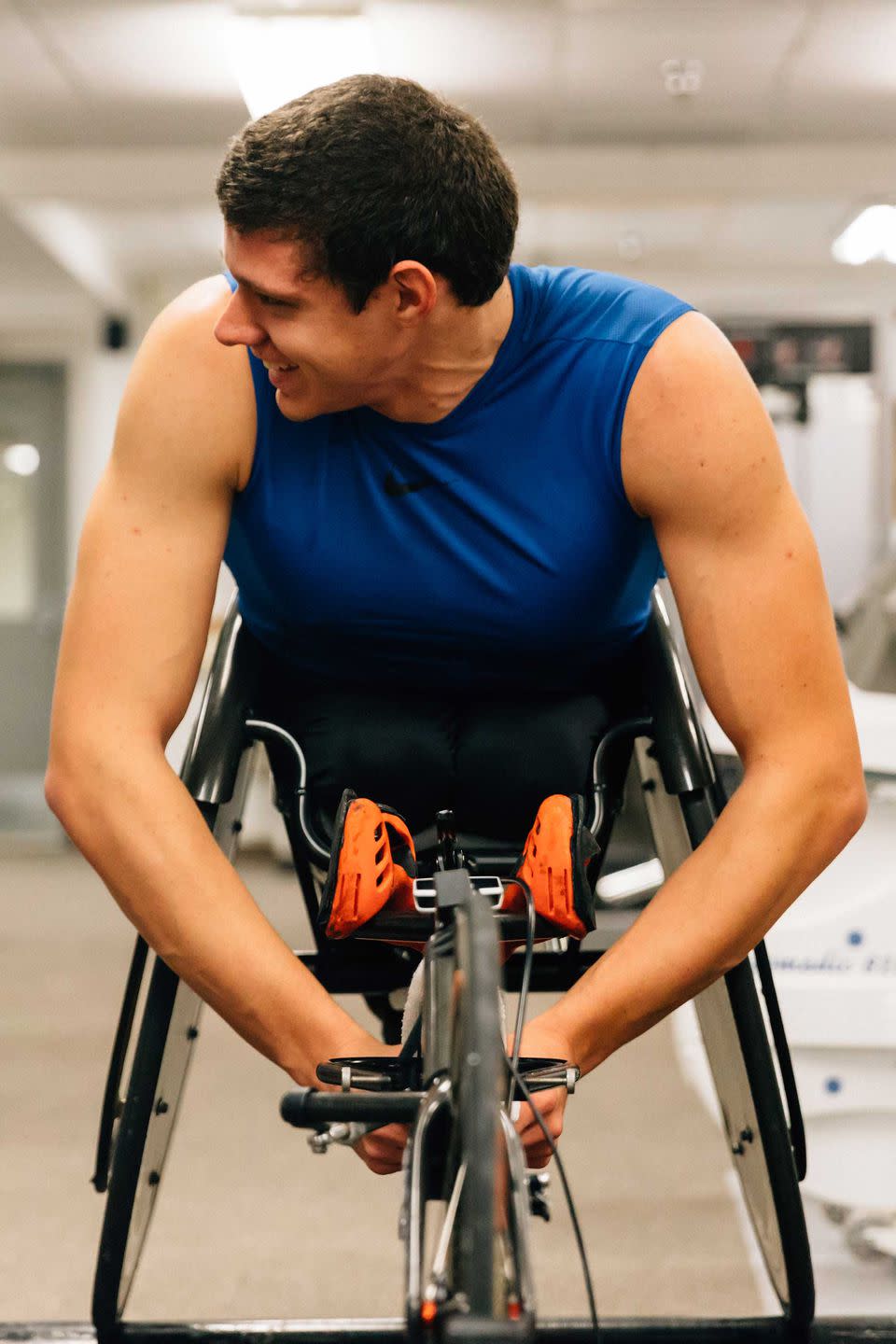
It’s been an incredible year, and the future looks just a bright-especially for an athlete who’s just 20 years old.
While Bleakney-a Paralympic silver medalist and Chicago Marathon champion himself-is impressed by the timeline, he isn’t at all surprised by Romanchuk’s trajectory.
“I’m not saying that there haven’t been other people like him in the sport,” Bleakney said-and on the female side, another of his athletes, 17-time Paralympic medalist Tatyana McFadden, has dominated the competition for a decade. “But in the time since I’ve been involved-I started in 1996-I’ve never seen anyone like him.”
A Quiet Champion
Romanchuk, however, takes it all in stride. From his parents and coaches at the Bennett Blazers, the adaptive sports program where he got his athletic beginnings, he absorbed a simple lesson: “Do whatever you’re doing to the best of your abilities,” he said. “I was getting from point A to point B as fast as I could. That was my job. Who came where, didn’t really matter.”
That reserved reaction marks him as a different type of champion.
When Shalane Flanagan became the first American woman since 1977 to win New York last year, she famously yelled an expletive as she neared the finish line. Following his historic Boston victory in 2014, Meb Keflezighi wept, then dropped to the ground to do push-ups. “This is beyond running-this is for the people,” he said afterward.
But Romanchuk has never been one to vocalize his inner thoughts-for years, Kim said, “Daniel barely talked to anybody.”
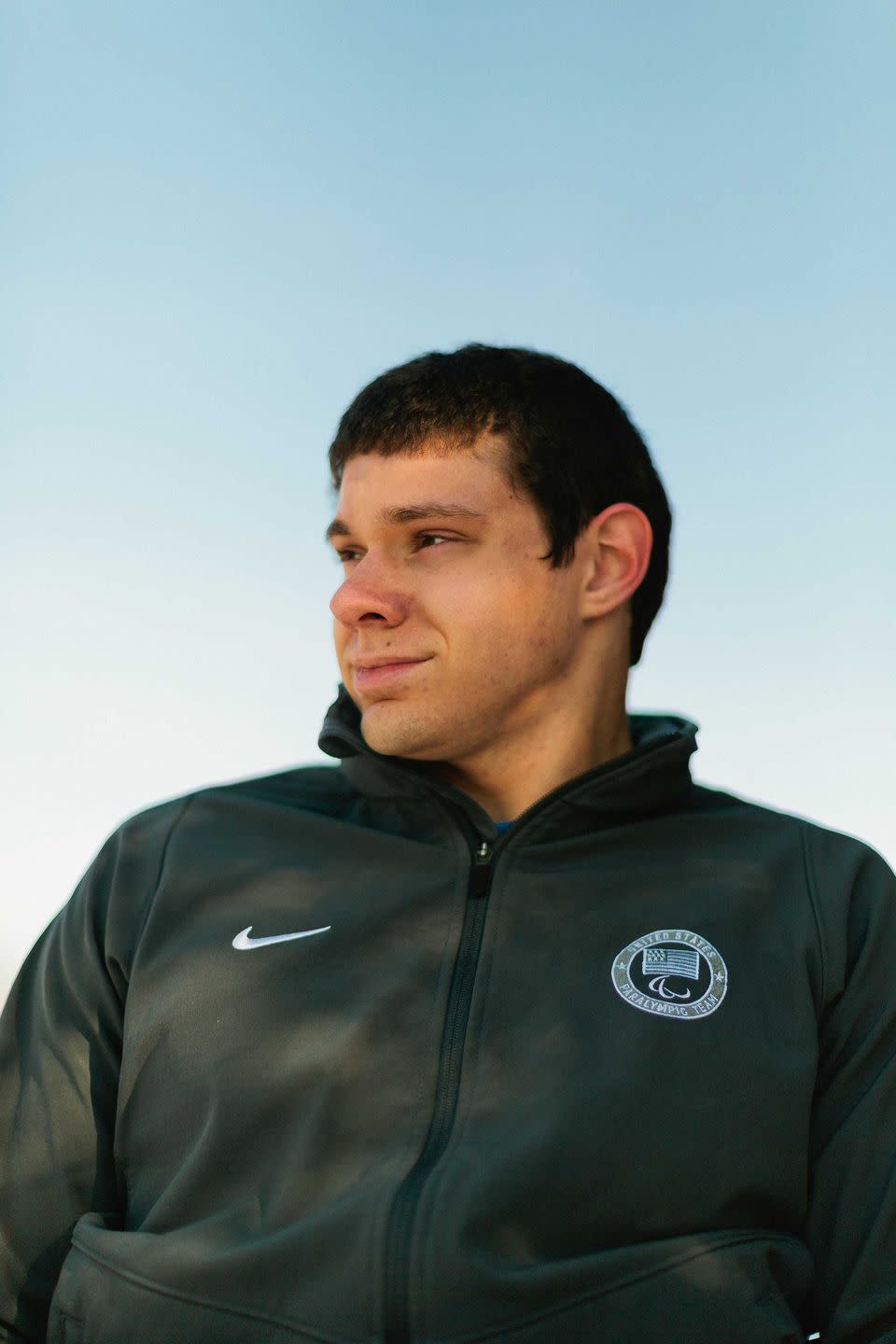
In a live postrace interview with ESPN anchor Sage Steele, Romanchuk mentioned process and integrity, but struggled when she asked him to explain what the victory meant to him. At the press conference afterward, he described his thoughts at the finish line-“I need air, and I’m in pain”-and admitted the championships still hadn’t sunk in.
Those close to Romanchuk say his straightforward responses reflect not a lack of passion but a brain more comfortable with numbers than feelings, a grounding in Christian faith and family, and a head-down, process-focused approach to the sport.
“I don’t think too much in the past or future,” he said. Before each race, he says a prayer: “Whatever happens during this race, to God be the glory and honor.” Afterward, he’ll pause to analyze his performance, then move on to apply those lessons to the next challenge.
Innate Gifts, and an Early Start
Romanchuk has stood out nearly from the beginning. He was born with spina bifida-a condition in which the spinal column doesn’t close all the way-as well as what Kim describes as “a natural sense of where his body is in space.” Even as a toddler, his physical therapist noted his striking coordination.
Romanchuk grew up in rural Mount Airy, Maryland, with Kim, her husband Stephan, and older siblings Kathryn and Josh. At age 2, he joined the Blazers, an adaptive sports program linked to the Kennedy Krieger Institute in nearby Baltimore.
McFadden, who also has spina bifida, trained there too. Their age difference-she’s 29-meant they barely overlapped, but the families are good friends. The program’s motto-“teach kids with disabilities that they can before they are told they cannot”-made a deep impression on both.
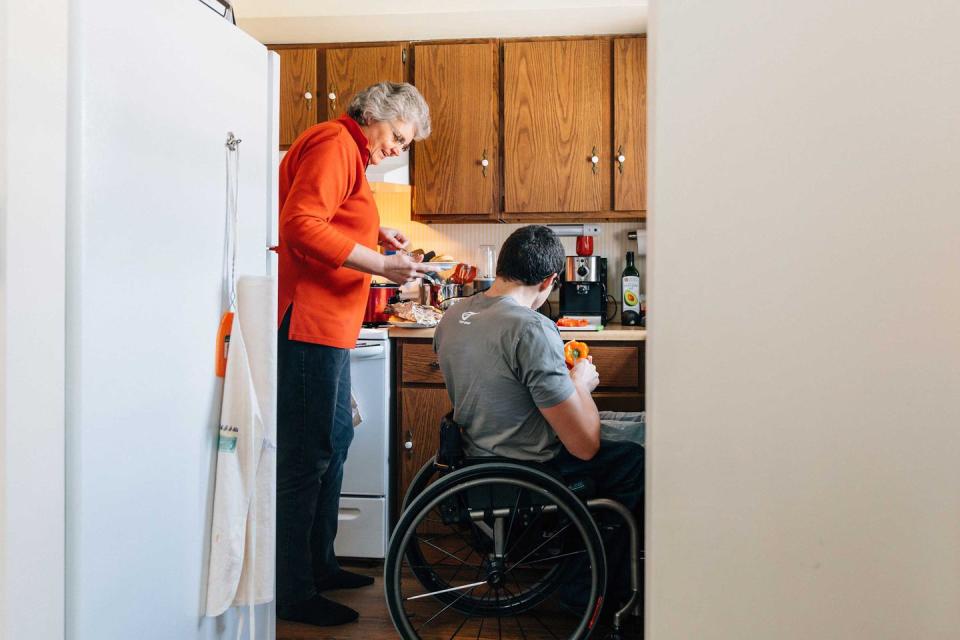
Romanchuk’s distinct personality, including his literal interpretation of instruction, also emerged early. Coaches Coaches Gerry and Gwena Herman encouraged participants to try every sport, from archery to sled hockey and table tennis. The first time he played softball, coaches told Romanchuk he needed to touch the bases. So he wheeled up to first, came to a full stop, and reached out to tap the bag before proceeding.
Romanchuk went to his first track meet around age 6; before long, he was routinely setting age-group records and heading to national competitions. At the time, Bennett didn’t have a formal track team. Coach Gerry Herman would sometimes take Romanchuk on long weekend pushes, but day to day, it was Kim overseeing his training and his education. Romanchuk and his two siblings were homeschooled, as part of a collaborative with other families. Kim, a radiologist by training, taught science classes, and took her kids to others’ homes for other subjects.
It was on a drive home from one of those sessions-in the winter of 2014-that Kim made a proposal. She saw Romanchuk’s potential and crunched the numbers, and realized that with focus, he had a shot, if a long one, at making the 2016 Paralympic team. After a day or so of thought, he decided to go for it.
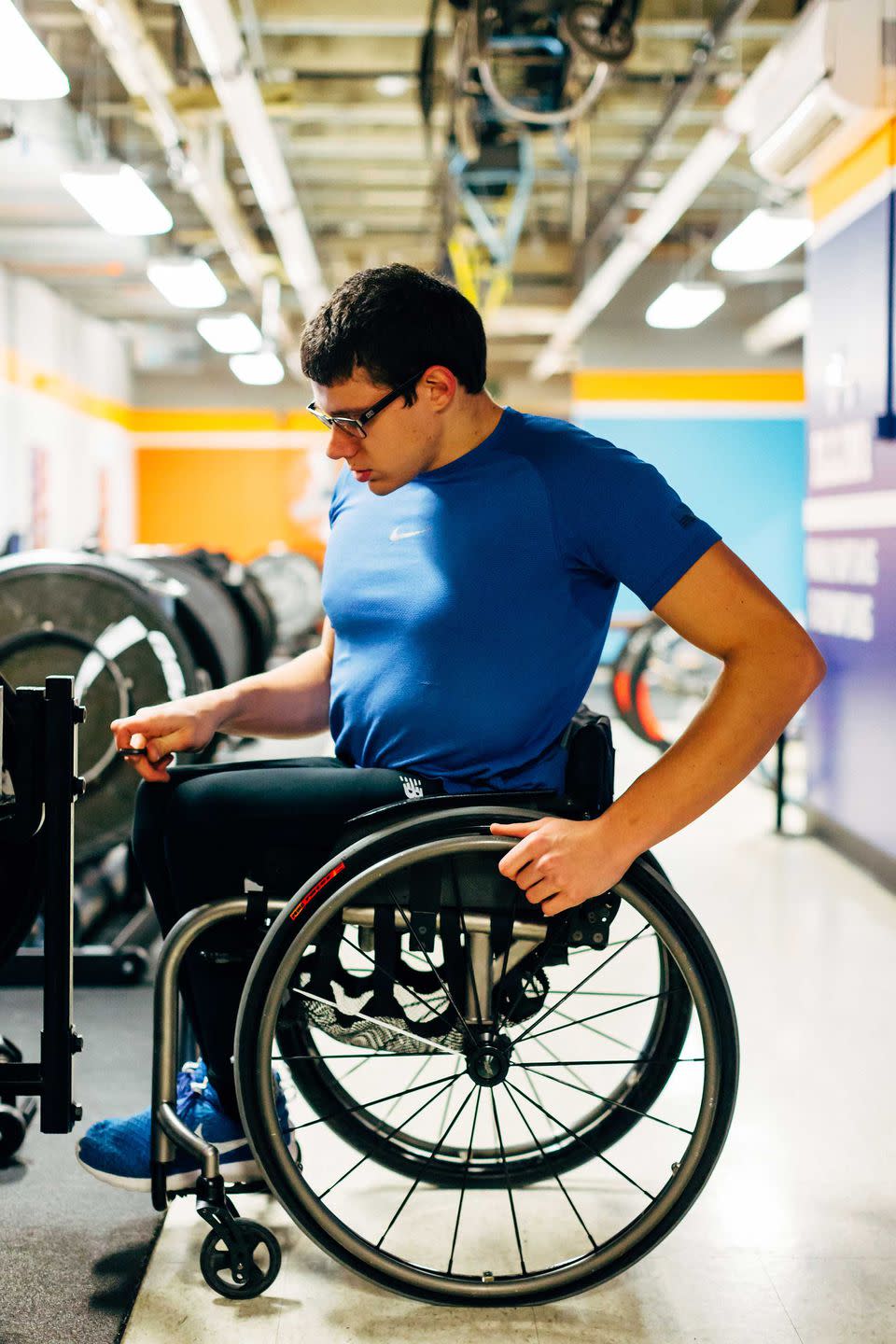
They both know it would require changes-making track a priority over other sports, and taking a more serious and structured approach to training. It was well-known that “if you want to progress in wheelchair track, U of I is the place to be,” Romanchuk said. After a formal introduction from a mutual contact, they approached Bleakney about coaching.
What started as a loose agreement to come for a week or two of training turned into regular, weeklong visits. After about five months, the Romanchuks bought a townhouse not far from the Champaign, Illinois campus. For now, Romanchuk is taking classes toward an engineering degree at nearby Parkland Community College, with a plan of transferring to the U of I eventually, depending on how his racing schedule impacts his classes.
A Shift in Approach
Moving cross-country and splitting the family hasn’t always been easy; Romanchuk and his father, back in Maryland, stay in touch playing Call of Duty together on Xbox in the evenings. But the transition provided a spark that ignited Romanchuk’s ongoing transformation.
Now, he trains at a site officially designated as a U.S. Paralympic training facility. Everywhere around him are signs of the program’s storied legacy. Lining the walls of the training room are portraits of Paralympic and Olympic competitors and medalists. They date back to 1960-the year the first Paralympic Games were held in Rome.
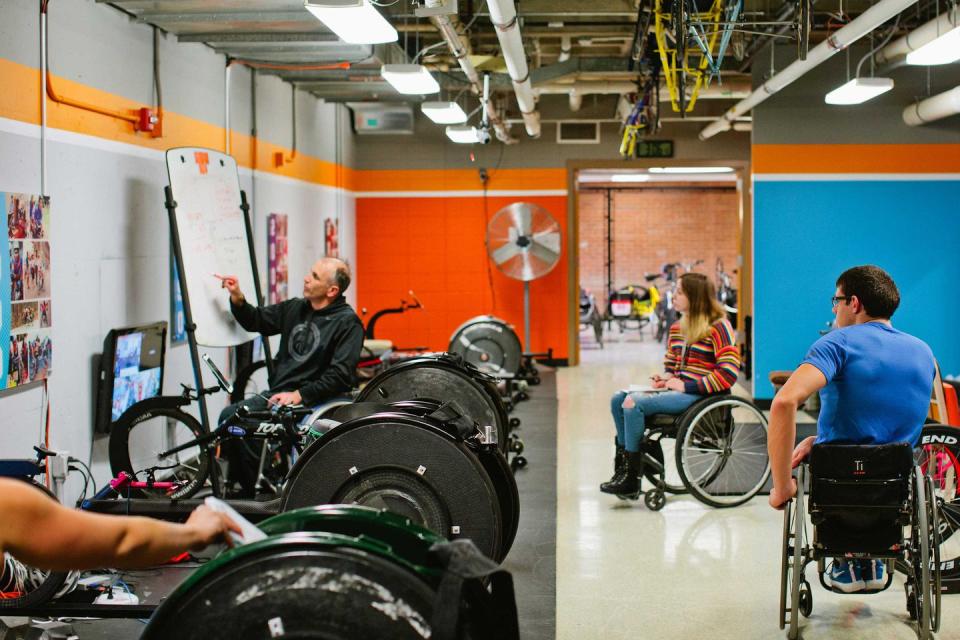
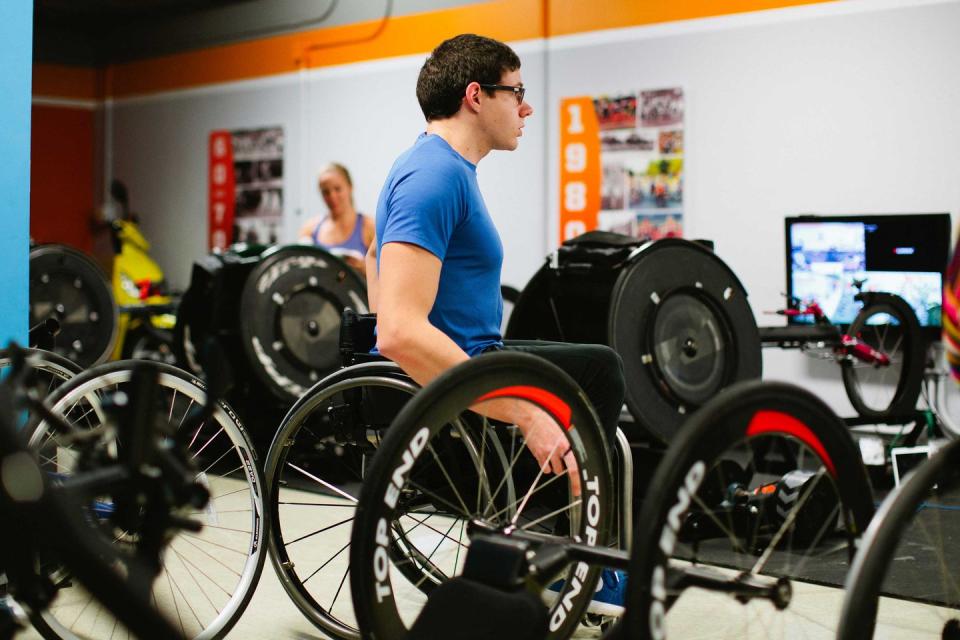
Romanchuk arrived in Champaign, at 16, with raw talent but a lot to learn. In addition to powerful athletes, wheelchair racers must be adept mechanics; Romanchuk couldn’t even change a tire from his chair, a skill he learned quickly once his coaches caught him hopping out to fix a flat.
He didn’t know much about race strategy and was terrified of drafting, a risky but essential tactic at the sport’s higher levels. “You have to be comfortable, at 22 miles an hour, with your front wheel within the wheelbase of somebody else,” Bleakney said.
Bleakney-and the team-willingly provided Romanchuk’s education. The experienced athletes eased him into drafting formation, letting him start at the back of the pack and steadily get closer as his comfort level increased.
“It’s a great relationship this program has in terms of bringing athletes together to bring out the best in everyone,” said teammate and two-time Paralympian Brian Siemann. “To now see where he is, is really awesome and it doesn’t hurt that now he gets to pull me, to help me get better.”
His older, more gregarious teammates also brought Romanchuk out of his shell socially. Siemann, who often rooms with Romanchuk on team trips, made it a point to get the younger athlete to speak up, sometimes by gently ribbing him.
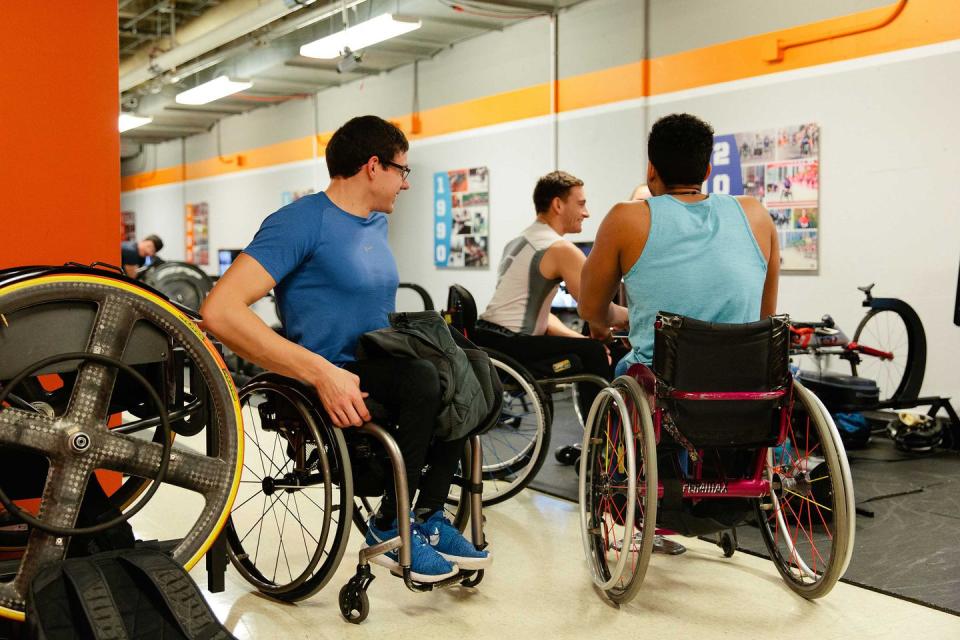
“One day on the track, I remember I made some sarcastic comment to him and he just looked at me, paused, told me to shut up, and then just pushed away,” Siemann said. “I don’t think I’ve ever been so happy to have someone tell me to shut up before. At that moment I knew he was finally starting to feel like a member of this team.”
On the track and roads, Romanchuk was a quick study. He achieved his goal of making the Paralympic team in 2016, and competed in every event in Rio from the 100 meter to the 5,000 meters. He didn’t make a single final, but that wasn’t the purpose. As always, he did what Bleakney told him to. He soaked up every experience that might serve him well in 2020, from travel to living in the village to lining up against the world’s best.
Reaching the Next Level
The fall after Rio, he raced the New York Marathon and came in 16th place. Based on advice from Bleakney and Marty Morse-a former head coach at the U of I, a prominent researcher in the sport, and another of Romanchuk’s athletic mentors-he made a few big changes afterward.
For one thing, he exchanged his soft, leather gloves for the hard plastic pair he now uses. They’re custom-made to fit his extra-large hands, 3D-printed at the university. Wheelchair racers don’t actually grip their wheels, but push against rings attached to them, and hard gloves allow Romanchuk to transfer more energy from his hand with each stroke.
And, he switched the size of those rings, from 15 inches to 17 inches. The bigger size better suits his physiology, further aids him in climbing hills-already one of his strengths-and also makes it easier to start faster.
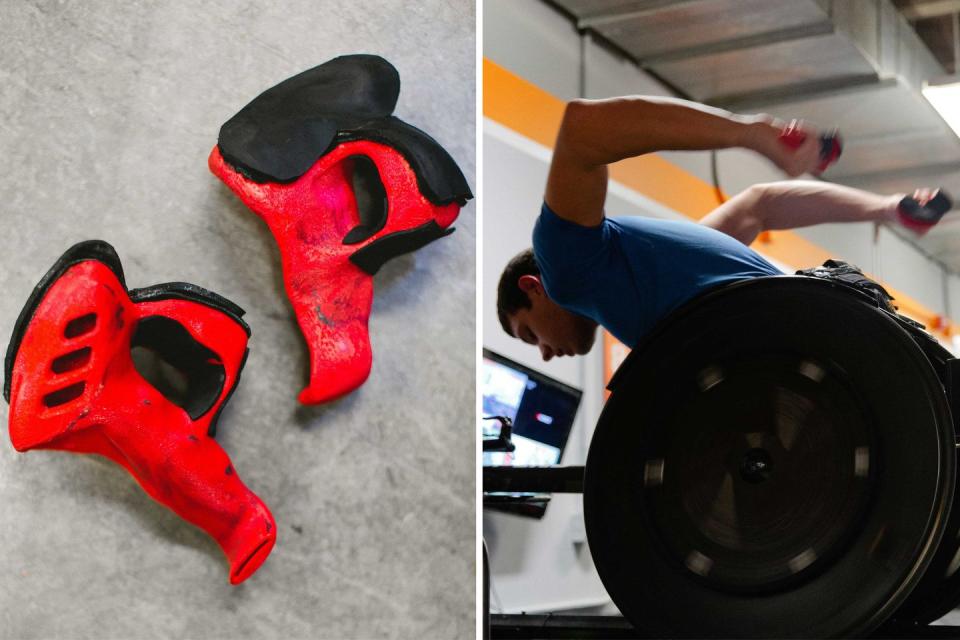
The shifts required a complete overhaul of his stroke, something he said he’s still fine-tuning. But they added two more pieces to the puzzle. Also in the spring of 2018, he received a new, lightweight carbon-fiber racing chair from sponsor Top End.
Soon, he was hitting speeds and times in practice Bleakney had rarely seen, even from experienced Paralympians. He won shorter road races, including the Peachtree 10K, in addition to smashing records on the track. By the time he won Chicago and New York, Bleakney said, “he had established himself.”
Building on His Momentum
Romanchuk’s ascent comes at at time when Paralympic sport is increasing in prominence and payoff, thanks in no small part to the efforts, advocacy, and even legal actions of athletes like Bleakney and McFadden.
Through the Abbott World Marathon Majors, wheelchair athletes now compete for increased purses in individual races and in Series X, an additional $50,000 prize awarded based on how they finish in the six global races. In September, the U.S. Olympic Committee announced that Paralympic and Olympic athletes would be compensated equally for winning medals.
All that has made wheelchair the sport a viable career path, allowing racers to focus on training and competing with less financial strain. And with athletes like Romanchuk continuing to captivate audiences, McFadden sees more progress to come: “The more competitive it gets, the more recognized and exciting our sport is as well,” she said. “He’s going to really push the boundary.”
One place that might show is at the Paralympic Games in Tokyo 2020. Bleakney believes Romanchuk could reasonably win gold in the 400 meters, 800 meters, 1500 meters, and the marathon. He’s fond of giving his athletes nicknames, and one he’s long used-All Roads Lead to Romanchuk-encapsulates the young athlete’s potential.
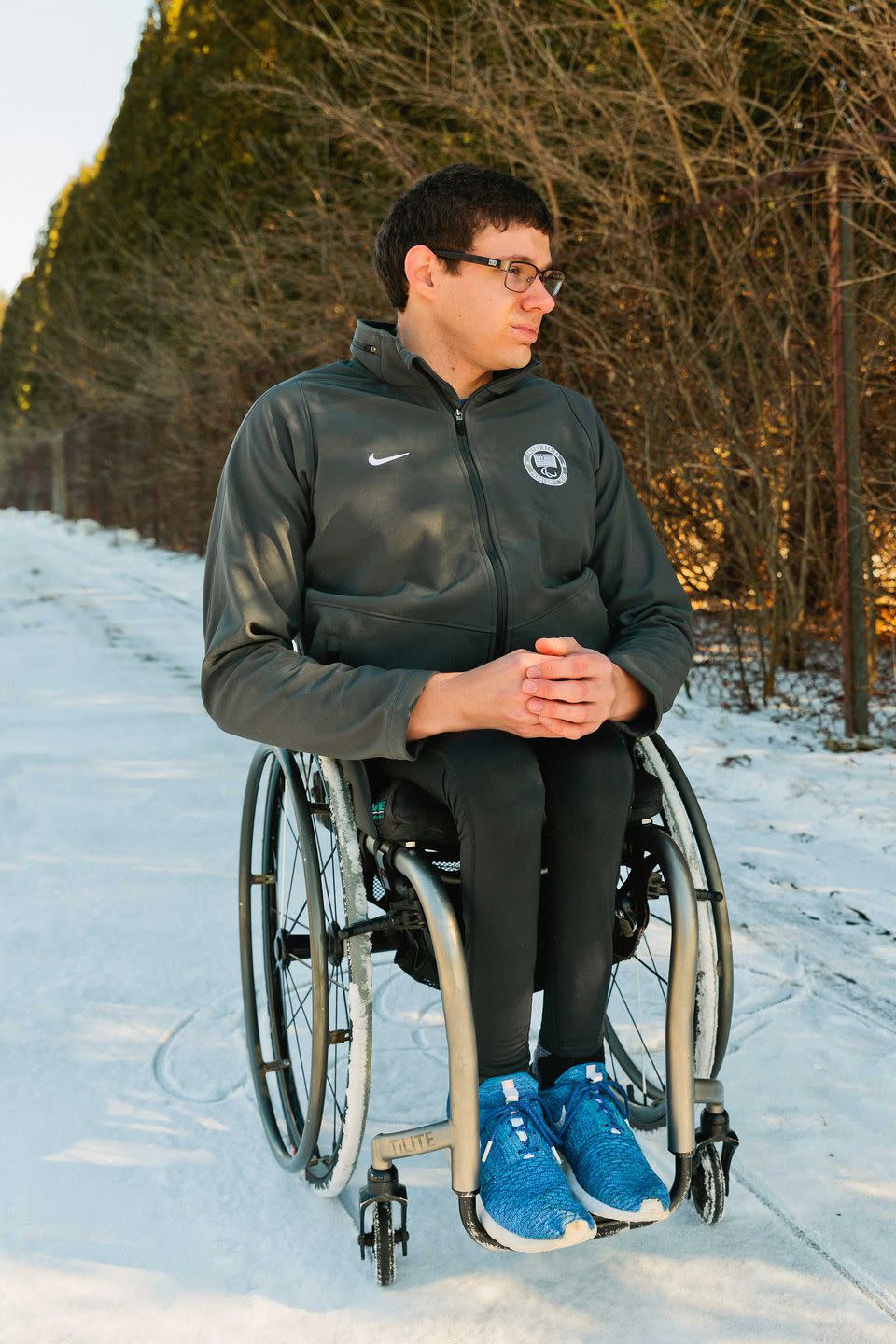
In typical fashion, Romanchuk is more low-key about his prospects. “I would like to medal there, but it’s not the end of the world if I don’t,” he said. The competition will be stiff-including past medalists like Hug, South African Ernst van Dyk, and Britain’s David Weir-and Romanchuk prefers to set goals within his control. So he’ll aim to do his best, and of course, to follow the plan his coach has set out for him.
As he takes his place in the sport’s upper echelon, Romanchuk sees opportunities to share his victories. He already returns to the Bennett Blazers regularly to help mentor younger athletes. He hopes to continue using his platform to support Christian outreach, partnering with organizations like Wheels for the World through Joni and Friends, which refurbishes used chairs for people with disabilities worldwide.
Success, he knows, enables these efforts. So he pursues it with focus and integrity-“there are a lot shorter ways to get to where I am, but I will not do them,” he said. And, he’s grateful when he can achieve it, even if he doesn’t pause for too long to celebrate.
('You Might Also Like',)

